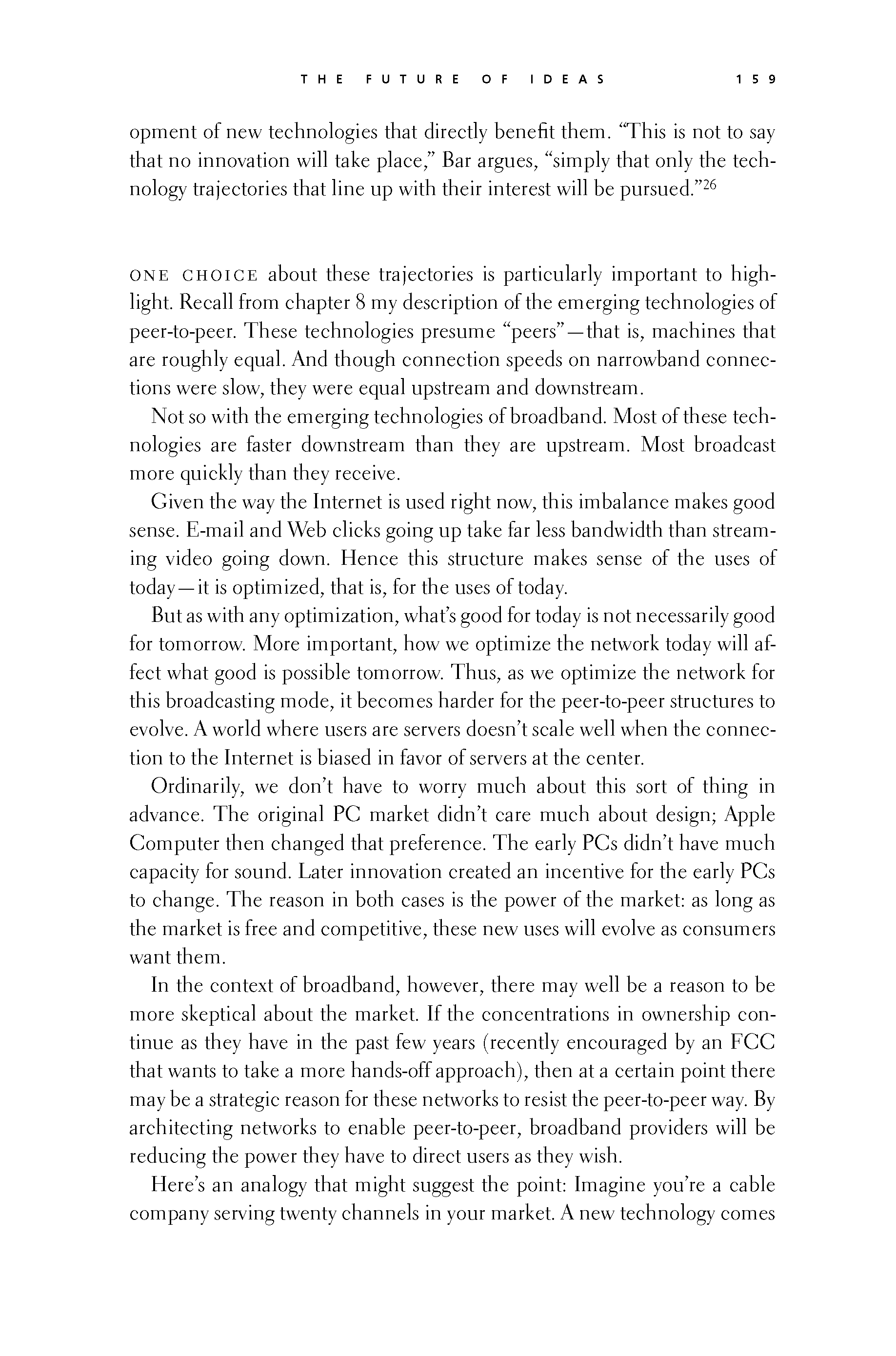 p158 _
-chap- _
toc-1 _
p159w _
toc-2 _
+chap+ _
p160
p158 _
-chap- _
toc-1 _
p159w _
toc-2 _
+chap+ _
p160
opment of new technologies that directly benefit them. "This is not to say
that no innovation will take place," Bar argues, "simply that only the tech-
nology trajectories that line up with their interest will be pursued."[10-26]
///\\\
One choice about these trajectories is particularly important to high-
light. Recall from Chapter 8 my description of the emerging technologies of
peer-to-peer. These technologies presume "peers" -- that is, machines that
are roughly equal. And though connection speeds on narrowband connec-
tions were slow, they were equal upstream and downstream.
Not so with the emerging technologies of broadband. Most of these tech-
nologies are faster downstream than they are upstream. Most broadcast
more quickly than they receive.
Given the way the Internet is used right now, this imbalance makes good
sense. E-mail and Web clicks going up take far less bandwidth than stream-
ing video going down. Hence this structure makes sense of the uses of
today -- it is optimized, that is, for the uses of today.
But as with any optimization, what's good for today is not necessarily good
for tomorrow. More important, how we optimize the network today will af-
fect what good is possible tomorrow. Thus, as we optimize the network for
this broadcasting mode, it becomes harder for the peer-to-peer structures to
evolve. A world where users are servers doesn't scale well when the connec-
tion to the Internet is biased in favor of servers at the center.
Ordinarily, we don't have to worry much about this sort of thing in
advance. The original PC market didn't care much about design; Apple
Computer then changed that preference. The early PCs didn't have much
capacity for sound. Later innovation created an incentive for the early PCs
to change. The reason in both cases is the power of the market: as long as
the market is free and competitive, these new uses will evolve as consumers
want them.
In the context of broadband, however, there may well be a reason to be
more skeptical about the market. If the concentrations in ownership con-
tinue as they have in the past few years (recently encouraged by an FCC
that wants to take a more hands-off approach), then at a certain point there
may be a strategic reason for these networks to resist the peer-to-peer way. By
architecting networks to enable peer-to-peer, broadband providers will be
reducing the power they have to direct users as they wish.
Here's an analogy that might suggest the point: Imagine you're a cable
company serving twenty channels in your market. A new technology comes
[[159]]
p158 _
-chap- _
toc-1 _
p159w _
toc-2 _
+chap+ _
p160